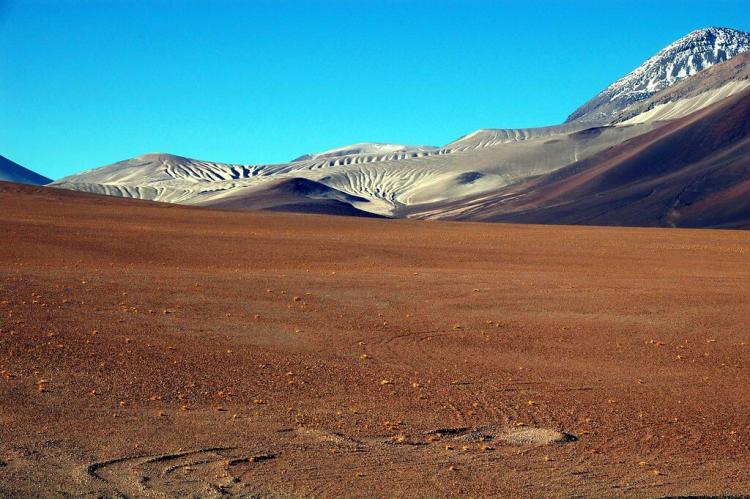Nevado Tres Cruces National Park (Chile)
Nevado Tres Cruces National Park is located in the Atacama Region of Chile and includes Laguna Santa Rosa, Laguna del Negro Francisco and a part of the Salar de Maricunga. It is named after the Nevado Tres Cruces massif, which dominates the landscape.
Nevado Tres Cruces National Park
Nevado Tres Cruces National Park is located in the Atacama Desert. It is situated in the Andes Mountains of northern Chile, within the Atacama Region, east of Copiapó.
Encompassing 59,100 ha (146,000 acres), the Park includes Laguna Santa Rosa, Laguna del Negro Francisco, and a part of the Salar de Maricunga.
Nevado Tres Cruces National Park is known for its stunning natural landscapes, including high-altitude lakes, salt flats, and the towering peaks of Nevado Tres Cruces.
The Park is named after the Nevado Tres Cruces massif, which dominates the area's landscape while not located within the Park.
The National Park is divided into two zones:
-
Northern zone: encompassing the southern portion of Salar de Maricunga and Laguna Santa Rosa
-
Southern zone: surrounding the Laguna del Negro Francisco
The Salar de Maricunga is a salt flat at 3,700 m (12,139 ft). The Laguna Santa Rosa, located just to its south, is known for its Andean flamingos, which reside year-round. Both are Ramsar Wetlands.
Laguna del Negro Francisco is located at 4,126 m (13,537 ft) elevation and is encircled by Andes foothills. It hosts an abundance of flamingos and vicuñas.
Situated within the Dry Andes climatic region, the area of the National Park lies within the Southern Andean steppe, high-elevation montane grasslands and shrublands ecoregion. Average annual temperatures range from 3 - 19 °C (37 - 66 °F). Lows can reach 5 °C (41 °F) in summer and -15 °C (5 °F) in winter.
Flora and Fauna
Ecosystems that include puna grasslands, wetlands and arid slopes allow for diverse flora and fauna. Around 65 plant species and 77 animal species are common in the area, of which about 62 are birds, 11 are mammals, and four are reptiles.
Nevado Tres Cruces
Nevado Tres Cruces is a massif that straddles the border between the Catamarca Province of Argentina and the Atacama Region of Chile within the Andes Mountains. The international road, Paso de San Francisco, crosses the border just to its north.
The volcano is massive, covering an area of about 1,000 sq km (390 sq mi), consisting of a 10 km- (6.2 mi-) long and 5 km- (3.1 mi-) wide north-south trending chain made up of at least three overlapping volcanoes.
The three main summits, all of which are of volcanic origin, are, in descending order of height:
-
Tres Cruces Sur at 6,748 m (22,139 ft)
-
Tres Cruces Centro at 6,629 m (21,749 ft)
-
Tres Cruces Norte at 6,206 m (20,361 ft)
Several lava domes surround the mountain complex, and craters are on its summits. The central volcano, whose last eruption was approximately 28,000 years ago, is of rhyodacitic composition. However, the volcano is a candidate source for a Holocene eruption and may become active.










